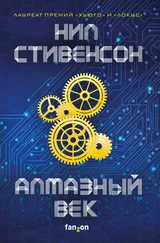SNEEUWBERG
T.R.’s logistics people had warned Willem that he might need oxygen just to remain upright and conscious at the mine. This information had reached him in the form of a link copy/pasted to the tail end of the calendar invite. They hadn’t bothered to warn Amelia, so maybe it was an age-related thing. But they had hastened to assure him that oxygen tanks on wheels would be available at the helipad and he shouldn’t hesitate to just grab one on his way past.
With that as prelude, the chopper ride from Tuaba did not disappoint. In mere seconds they’d left the town behind them and were flying over jungle that was as dense as any Willem had ever seen. The chopper’s main task was not to cover ground—they were only going a hundred kilometers—but to gain altitude, which it did by ramping up steadily along the whole duration of the flight. So at first the jungle plummeted far below and became veiled in clouds. A single gossamer strand of road was laced through it, often hidden beneath the canopy but sometimes breaking into view when it ran across a swamp on a causeway or skirted the river.
Looking out the front they could see the mountains rising up in their path to the north. Over the next half hour the land shouldered up out of a sea of low clouds. By that point the works of Brazos RoDuSh had ramified away from the road to cover large patches of the landscape: settlements where workers could live, close to the mine as distances were measured on a map, but still thousands of meters below it in altitude. Spurs reached out to depots and industrial works the nature of which Willem didn’t understand. But he knew that the gist of it was to crush the ore into powder and concentrate it using some water-based process and send the resulting slurry down a pipeline that ran through the jungle, parallel to the road, all the way to the coast, where it could be poured into huge ships bound for places where the red metal was smelted. His Green instincts, drilled into him by a life spent in a modern Western social democracy, told him to be outraged by what the miners had done to this part of the planet. But he knew that every wind turbine feeding green electricity into the Netherlands’ grid had copper windings in its generator and copper cables connecting it to the system. And that the copper had come from here.
Never in his life had Willem seen such rugged terrain. Range after range of vertiginous mountains, each much higher than the last, passed below them and then plunged into valleys of Grand Canyon–like depth. And yet the mine proper was still far above all that, connected to its outlying works by tramways and pipelines that ran nearly vertically.
Finally, after the sky above had grown a very dark shade of blue, as if they were halfway to orbit, he saw a place where the top of a steep mountain had simply been sheared off. Above one side of it rose tiered ramps connecting it to a higher plateau beyond, for use by the special high-altitude trucks and excavators that were Uncle Ed’s stock in trade. Atop all that was a plateau almost at a level with New Guinea’s highest peak, which lay just a few kilometers farther inland. As they came in for a landing, Willem glimpsed a whole additional mining complex beyond: a pit that could have swallowed central Amsterdam, a ramp spiraling down to its bottom, trucks he knew to be the size of seven-story office buildings scuttling up and down looking no bigger than lice.
Amidst all that hugeness, he had to re-calibrate his eye just to see what he had come all this way to look at. In the desert of West Texas the Biggest Gun in the World had looked big just because it was the only sign of human activity, other than barbed-wire fences, for miles. Here, though, the head frame of the gun could have been overlooked as just another mysterious bit of mine infrastructure. Likewise, the sulfur heap was dwarfed by mountainous piles of mine spoil. It stood out only because it was yellow.
As advertised, little oxygen tanks on carts were lined up for the taking to one side of the helipad. There was also a rack with ski jackets, so that people who’d just flown up from the equatorial jungle didn’t have to bring warm clothes with them. But T.R. was standing right by the helipad next to a Tesla SUV (didn’t burn gasoline; didn’t need air) with its gull wing doors open. So Willem just quick-walked over and climbed into that, then leaned back and waited for his heart and lungs to scavenge enough oxygen to return his body to some kind of equilibrium. The seat was warm and so was the air once T.R. had got in and closed the doors. If there had been a chauffeur, Willem would have sat in the back with T.R. and Amelia would have rode shotgun. As it was she rode in the back so that T.R. and Willem could occupy the two front seats.
“You do have a taste for weird, difficult parts of the world,” Willem gasped, when the oxygen panic had subsided.
T.R. considered it carefully. “A thing you learn real fast, when you are in the oil business”—he pronounced it “ol bidness” and Willem honestly didn’t know if it was wry Texan self-parody, or actually how he talked—“or mining, is that almost every part of the world is weird and difficult. We don’t see those parts because we prefer to build our habitations in more hospitable areas. Which are rare. We come to think of Connecticut, Florida, France, and all that as how the world is. Places like this being aberrations. Thing is, geology don’t care about our convenience and so it puts the oil and the minerals in locations that are truly random. You put on a blindfold, Dr. Castelein—”
“Willem. Please.”
“You throw darts at random into a spinning globe, the odds of hitting Connecticut are small. The odds of hitting what you call a weird, difficult part of the world are high.”
“Fair enough.”
“But I’ll give you this much: this is the worst place of all, with the possible exception of Antarctica. The first map of New Guinea was drawn up just a little over a century ago. It killed seventy-nine out of eight hundred men who worked on it.”
“Drawing the map!?”
“Drawing the map. The first European expedition to these parts involved four hundred men and took over a year. Only fifteen of those four hundred stuck it out—and they didn’t even come close to reaching where we are now! When some crazy Dutch mountaineers finally made it up here in the 1930s they described it as a mountain of ore on the moon. This here”—T.R. made a “look about you” gesture—“was then the highest point on Earth between the Himalayas and the Andes. Because it was buried fifty meters deep under a glacier. Hence, the Dutch name of the place. Sneeuwberg. Snow Mountain. Since then the glacier has melted and the mountain has been leveled. No snow, no mountain. So now that ”—he pointed to the brown rock crag that loomed over all this, so close they could, with oxygen tanks, simply hike over to it—“is the highest.”
“Five thousand meters, give or take,” Willem said.
“That is correct.”
T.R. during this had been piloting the car over a terrible road at little more than a walking pace. They had put the helipad behind them and passed through a security gate staffed by Caucasian men armed with submachine guns. There was a sort of buffer zone consisting of strewn cargo pallets and parked equipment. Here and there, Papuan men in hard hats and high-visibility vests were working on engines or driving forklifts. Then they passed through another belt of armed security and came alongside a row of office trailers. “Fiefdoms of different subs,” T.R. explained. “Brazos RoDuSh is a mining company. Period. Don’t wanna run medical clinics, commissaries, housing, anything that ain’t mining per se. So, subcontractors. You might remember this one.”
Читать дальше
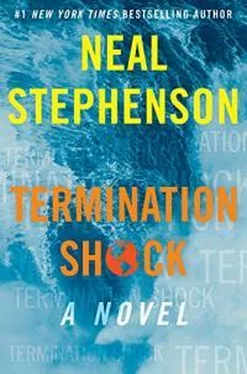
![Нил Стивенсон - Криптономикон [litres]](/books/23868/nil-stivenson-kriptonomikon-litres-thumb.webp)
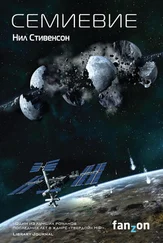
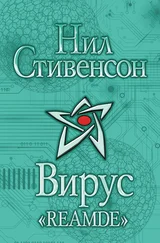


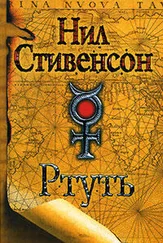

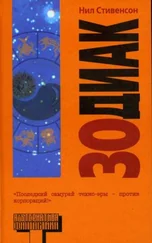

![Нил Стивенсон - Лавина [litres с оптимизированной обложкой]](/books/414066/nil-stivenson-lavina-litres-s-optimizirovannoj-ob-thumb.webp)
